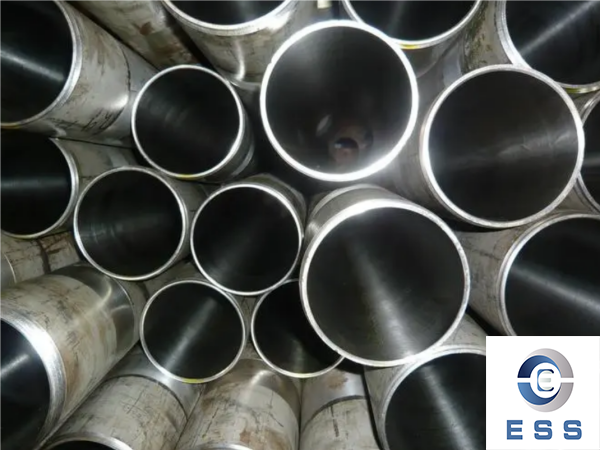The Ultimate Guide to Hydraulic Tubes
Introduction
Hydraulic tubes play a vital role in various industries, providing a means of transmitting fluid power efficiently and reliably. Whether it's in heavy machinery, automotive systems, or industrial applications, hydraulic tubes are essential components for powering hydraulic equipment. In this comprehensive guide, we will explore everything you need to know about hydraulic tubes, including their types, materials, sizing, installation, maintenance, and more.

Understanding Hydraulic Tubes
Hydraulic tubes, also known as hydraulic pipes or hydraulic lines, are specially designed pipes used to convey hydraulic fluid from one component to another in a hydraulic system. They are built to withstand high-pressure environments and transmit fluid power without leakage. Hydraulic tubes are typically made from steel, stainless steel, or other non-ferrous materials due to their durability and resistance to corrosion.
Types of Hydraulic Tubes
a) Seamless Tubes: Seamless hydraulic tubes are manufactured from solid cylindrical billets without any welding or seams. They offer superior strength and reliability, making them ideal for high-pressure applications.
b) Welded Tubes: Welded hydraulic tubes are formed by joining strips or plates of metal through welding. While they are not as strong as seamless tubes, welded tubes are more cost-effective and suitable for low to medium-pressure hydraulic systems.
Hydraulic Tube Materials
a) Steel Tubes: Steel is the most commonly used material for hydraulic tubes due to its excellent strength, durability, and resistance to corrosion. Common steel grades used include SAE 1008/1010, SAE 1020/1026, and SAE 4130.
b) Stainless Steel Tubes: Stainless steel hydraulic tubes are chosen for their superior corrosion resistance and ability to withstand extreme temperatures. They are commonly used in applications where hydraulic systems come into contact with corrosive substances or require high cleanliness standards.
c) Non-Ferrous Tubes: Non-ferrous materials like copper, aluminum, and titanium are used in hydraulic systems where weight reduction or resistance to specific chemicals is crucial.
Hydraulic Tube Sizing
Proper sizing of hydraulic tubes is essential for maintaining system efficiency and safety. Factors to consider when sizing hydraulic tubes include flow rate, pressure, viscosity, and temperature. It is crucial to consult hydraulic system design guidelines or work with hydraulic engineers to ensure accurate tube sizing.
Tube Fittings and Connectors
Hydraulic tubes require fittings and connectors to establish secure connections between components. Common types of fittings include flare fittings, O-ring face seal fittings, and compression fittings. Each type has specific advantages and is chosen based on the application requirements.
Tube Installation and Routing
Correct installation and routing of hydraulic tubes are critical for preventing leaks, maintaining system efficiency, and ensuring safety. Proper tube bending techniques, appropriate clamping, and secure mounting are essential considerations during installation. Additionally, tubes must be routed away from potential sources of heat, abrasion, and excessive vibration.
Tube Inspection and Maintenance
Regular inspection and maintenance of hydraulic tubes are essential to identify potential issues and prevent system failures. Common maintenance practices include checking for leaks, monitoring pressure and temperature, and inspecting tube condition for signs of wear, corrosion, or damage. Timely replacement of worn-out or damaged tubes is crucial for system integrity.
Tube Protection and Safety
Hydraulic tubes must be protected from external factors that could cause damage or compromise their integrity. Proper tube protection includes the use of guards, sleeves, or plastic covers to shield against abrasion, impact, or exposure to chemicals. Additionally, ensuring the correct working pressure and temperature limits are not exceeded is crucial for maintaining tube safety.
Troubleshooting Common Tube Issues
Hydraulic tube systems may encounter various issues over time. Some common problems include leaks, blockages, or tube failures. Understanding the potential causes and troubleshooting methods for these problems can help minimize downtime and prevent costly repairs.
Regulations and Standards
Hydraulic tube systems are subject to industry regulations and standards to ensure safety and performance. Familiarizing yourself with applicable standards, such as ISO 4413:2010 and ISO 8434 series, is crucial for designing, manufacturing, and maintaining hydraulic systems.
Conclusion
Hydraulic tubes are indispensable components of hydraulic systems, enabling the transmission of fluid power with efficiency and reliability. By understanding the types, materials, sizing, installation, and maintenance considerations of hydraulic tubes, you can ensure the optimal performance and safety of your hydraulic systems. Always consult with hydraulic experts and follow industry standards to make informed decisions regarding hydraulic tube selection, installation, and maintenance, ultimately maximizing the longevity and efficiency of your hydraulic equipment.
Read more: Pipeline cleaning method for seamless hydraulic tubes or Pipe layout design of seamless hydraulic tubes













 Eastern Steel Manufacturing Co.,Ltd not only improve product production and sales services, but also provide additional value-added services. As long as you need, we can complete your specific needs together.
Eastern Steel Manufacturing Co.,Ltd not only improve product production and sales services, but also provide additional value-added services. As long as you need, we can complete your specific needs together.










